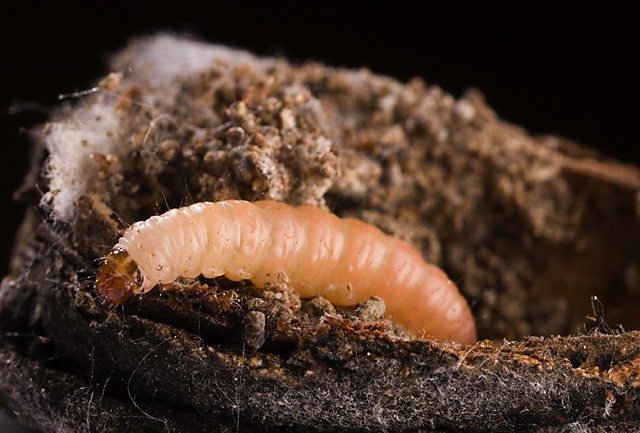What Are Navel Orangeworms: Controlling Navel Orangeworms On Nuts


Growing nuts in the home landscape isn't a hobby for the nervous, uninitiated gardener, but even those with lots of experience may find orangeworm moths particularly troublesome to their crops. The pesky caterpillars of these fast-breeding moths ruin the harvest with their precision attacks on nut meats. Navel orangeworms on nut crops, like pistachios and almonds, are not uncommon. Read on to learn more about this pest and its treatment.
What are Navel Orangeworms?
Navel orangeworms are the larvae of a silver-grey snout moth with black markings, which begin laying eggs within two days of adulthood. If you see these moths, you're probably already infested with orangeworm eggs. Eggs are laid on maturing nuts as well as mummy nuts, those nuts left after previous harvests, and hatch within 23 days. The larvae emerge reddish orange, but soon mature into a grub-like white to pink caterpillar with reddish heads. You may not see all stages of development, since navel orangeworms burrow deep into developing nuts and fruits. Although pistachios and almonds are major victims of this pest, figs, pomegranates, and walnuts are also susceptible. Early signs are hard to detect, often nothing more than tiny pinhole sized openings in maturing fruits, but as your navel orangeworms mature, they produce large amounts of frass and webbing.
Controlling Navel Orangeworms
Navel orangeworm treatment is difficult and time consuming when compared to protecting your crop from invasion by orangeworm moths looking for places to lay their eggs. If navel orangeworms are already present in your crop, it may be much easier to start planning for next season than to save the current crop. Start by removing all mummy nuts and fruits that are on the tree or ground to eliminate egg deposit sites. Do not bury or compost these potentially infected nuts, instead double bag them in plastic or destroy them by burning. Check your tree thoroughly for citrus flat mites or mealybugs while you're picking off the mummies, since these pests can cause nuts to remain on the tree after harvest --be sure to treat them if they're found. If you intend to treat your tree with chemicals, you need to time treatment carefully. Once they've entered the nut or fruit, it's too late for insecticides to do any good against navel orangeworms. Navel orangeworm traps are available to help monitor for adults, and methoxyfenozide is the chemical of choice at egg hatch. Organic gardeners may want to try spinosad or Bacillus thuringiensis, but even with these chemicals, timing is everything.
Sign up for the Gardening Know How newsletter today and receive a free copy of our e-book "How to Grow Delicious Tomatoes".

Kristi Waterworth was a regular contributor to Gardening Know How for many years, answering countless queries on plant pests and diseases.